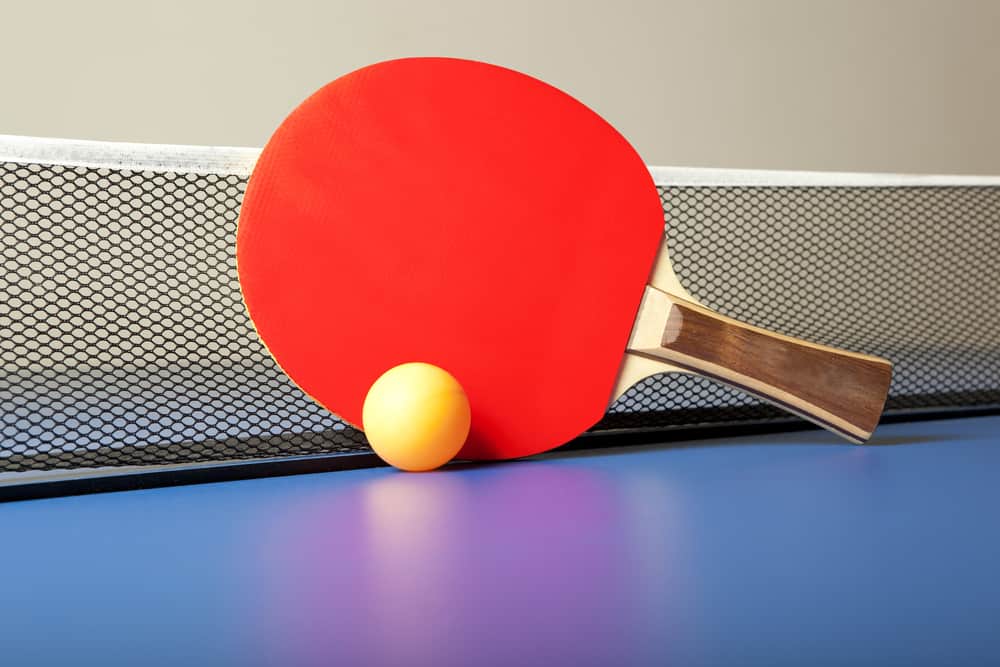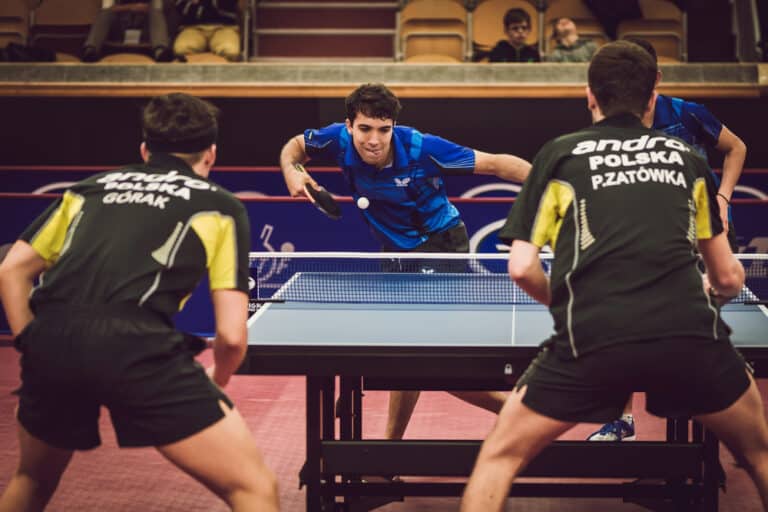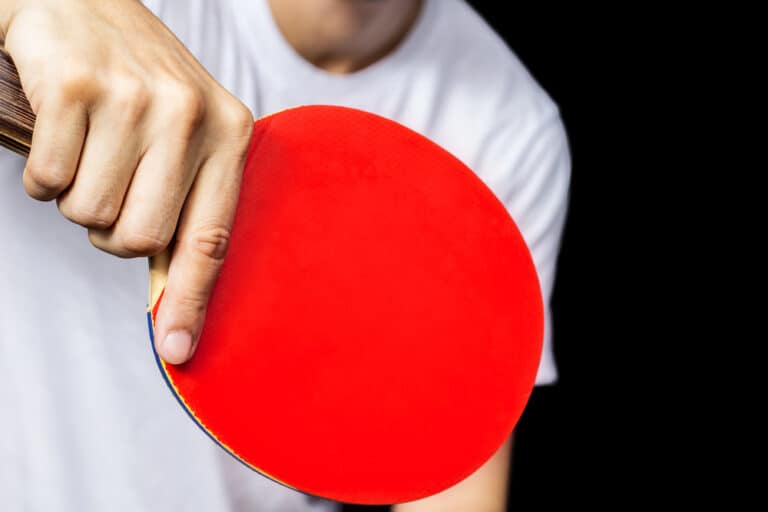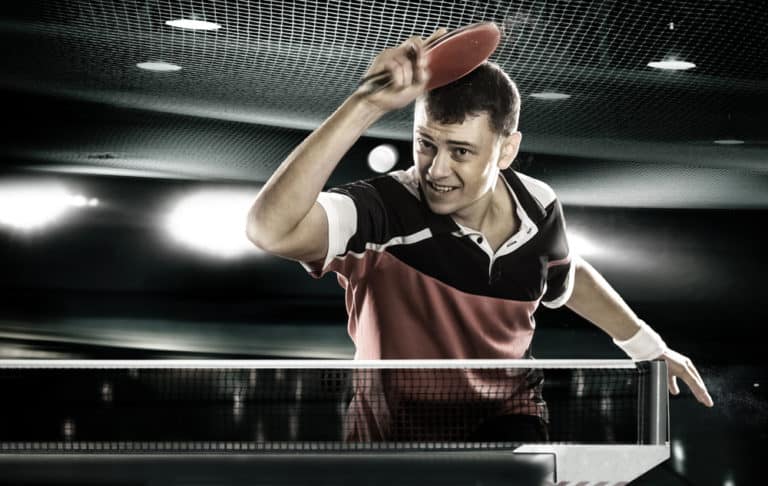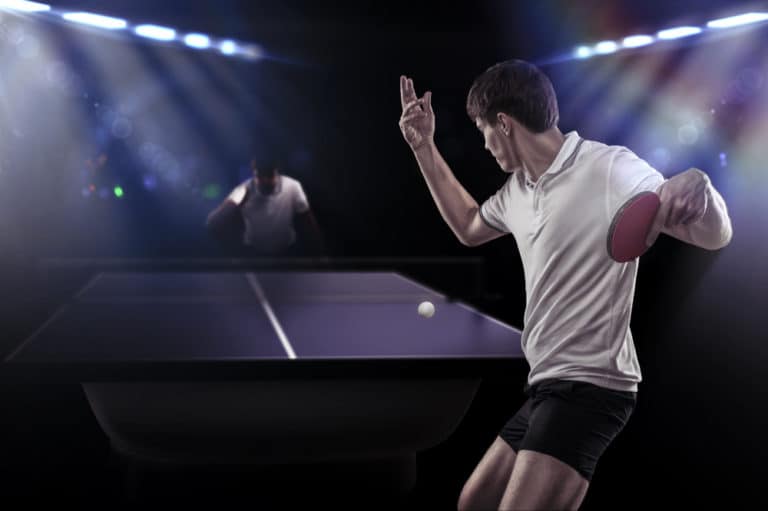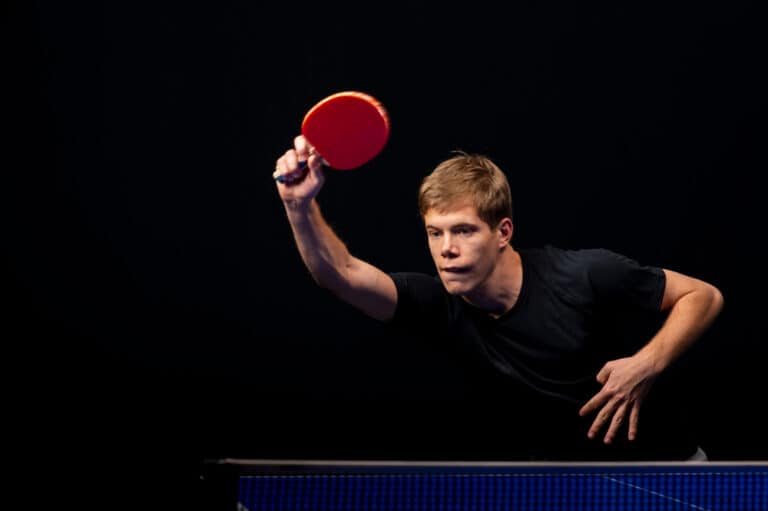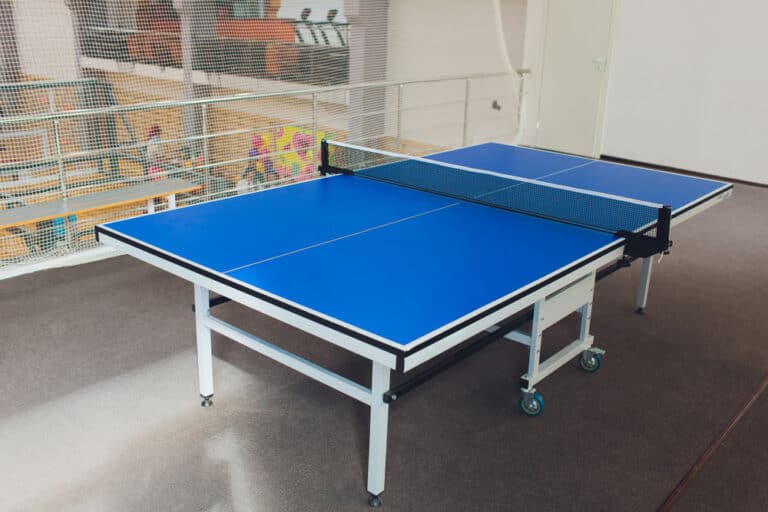Why Are Some Table Tennis Balls Orange?
Table tennis did not take off as a popular sport until 1900 with the introduction of celluloid balls. Although the game was devised and patented more than a decade before, the material the ball was made from was either too uncontrollably bouncy or not bouncy enough. Table tennis balls have slowly evolved as the game evolved, but you may be wondering why they come in two colors.
Table tennis balls are sometimes orange because they are more visible and contrast with background walls or the floor. Competition table tennis is governed by ITTF rules which indicate that balls must be white or orange. White is most commonly used on televised matches as it is easier to see.
If you are playing recreational ping pong can have fun with lots of ball colors. But once you move beyond your basement game and are ready to compete, you will find that balls are either orange or white. Let’s find out why so you can look like a pro from your very first tournament.
Why Are Some Table Tennis Balls Orange?
Table tennis received Olympic status in 1988 at the Seoul Games. Back in those days, the official ball colors were either white or yellow, although televised matches, even back then, were played with white balls. In 1993, the official rules were broadened to include orange as a permissible color.
In 1997, yellow was dropped, and white and orange are the only two table tennis ball colors currently recognized by the International Table Tennis Federation. The option of being able to choose between two colors makes it easier to adjust the game to more settings.
White balls may not have enough contrast to be visible in some settings, so having the option to use orange balls just makes more sense. If table tennis is being played where there is a white floor or background, using an orange ball will make it easier to see.
Why Does Table Tennis Have Two Ball Colors?
If white balls stand out well against the top surface of the table, you may be wondering why the ITTF even has another officially accepted ball color. The reason is visibility.
You would rarely find a top-level tournament being played with an orange ball because professionally staged courts have dark color backgrounds. Even the players’ uniforms need to contrast with the selected ball color.
Professional matches that are televised also use a white ball as a standard as it is easier for the viewing audience to see. Therefore white balls are most often used at top-level tournaments.
If you are playing a less formal tournament in a school gym or scouts hall, you may not have control of the background colors. If the walls are a light color, it makes more sense to use an orange ball to play. It will contrast better against the background, and you will be more likely to see the ball quickly to return a winning shot.
Are White Or Orange Ping Pong Balls Better?
White balls are most often used for professional table tennis matches. When played against a dark background, they are more visible to judges and television audiences.
Some table tennis players use orange balls for practice and switch to white balls for tournaments. Many coaches prefer using orange balls for training to make players more aware of their strokes and perfect their technique before moving to white balls.
Choosing white or orange is a matter of personal preference as long the balls meet the regulations in all the other aspects, including weight, size, material, and finish. It is perfectly acceptable to play using an orange ball at any level of the game so long as players agree on what color balls to use.
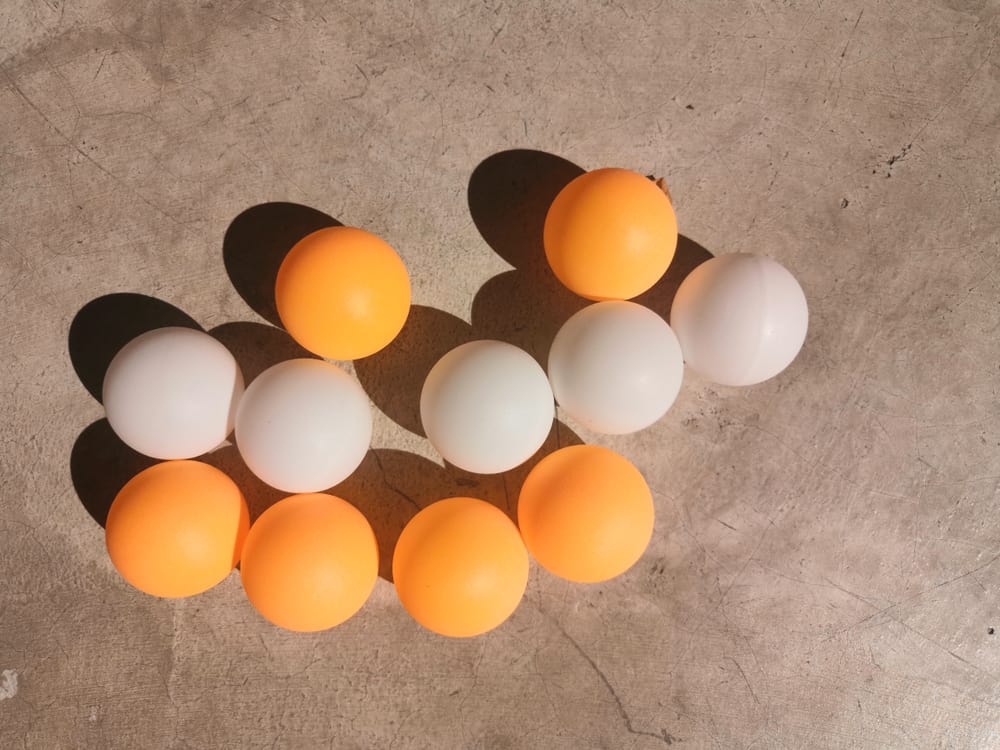
What Are The Best Balls For Table Tennis?
The best ball for table tennis is one that matches the level of your game. If you are playing social table tennis at home with your family or friends, it is perfectly acceptable to use affordable to use 1-star balls. They are inexpensive and perfect as practice balls in informal settings.
Table tennis balls are typically available in 3-star ratings. 4 And 5-star balls are available from some manufacturers, but the classification system recognized by the ITTF only extends to the 3-star rating.
The number of stars printed on the ball lets you know its rating. The most stars indicated the more expensive and durable you can expect the ball to be. Even novice players would notice that 3-star-rated balls are more stable and easier to play than 1-star-balls.
However, let’s summarize what you can expect from the various star levels:
- 1-star rating – These are fine for practice games or home table tennis sessions where there will be a lot of fun, laughter, kids playing, etc. The balls are cheap, and you just want to have fun.
- 2-star rating – These balls work well as training balls. 2-Star balls are perfect when you are honing your skills ahead of professional tournaments. They are better than 1-star balls and less expensive than 3-star balls.
- 3- star rating – These are the balls used in professional tournaments
How To Choose The Best Table Tennis Balls
A table tennis ball may seem like a standard item, but it is a carefully regulated piece of sporting equipment, and selecting a cheap ball may affect your game. Every aspect of the table tennis ball needs to meet specific ITTF regulations governing the sport.
Ball regulations include:
- The size of the ball – Tournament table tennis balls must be 40mm. If you are buying new balls, this is something to be aware of since ping pong balls are available in slightly different sizes.
- The weight of the ball – Although the ITTF ball weight is exactly 2.7g, slight allowances on either side are allowed, so the actual weight is between 2.67 and 2.77g. The lighter the ball, the slower it will move. Beginners usually do better with the heaviest possible balls.
- The material the ball is made from – Table tennis balls were made from a celluloid material for more than a century, but in 2014 the official material was changed to plastic.
- The shape of the ball – The ball needs to be spherical.
- The color of the balls – Only matte white or matte orange balls may be used. Choose the color based on the backgrounds. Both players must agree on which color balls to use, and the ball color must differ from the main color of the player’s sports attire.
What’s Inside A Table Tennis Ball?
Since regular tennis balls contain pressurized air or gas to give them their bounce, you may be wondering what is inside a table tennis ball. Table tennis balls are hollow and have nothing other than regular air inside. They are not pressurized like tennis balls.
The bounciness of table tennis balls is a result of the light material that it is made from and the ball’s shape. It is a very simple design compared to regular tennis balls, which lose their bounciness once the pressure inside and outside the rubber shell has equalized.
How Long Do Table Tennis Balls Last?
The quality of the balls and the force with which they are played affects how long they will last. The higher the star rating of the ball, the longer they tend to last – unless, of course, you accidentally stand on it! Table tennis balls last until they are dented or broken.
Most table tennis balls split or break as a result of high-impact strokes. Balls made from two halves glued together are most likely to split in half when they break. The seam that joins the parts often suddenly breaks apart.
Some 3-star balls are made using a seamless process. This makes them much more robust, but balls like Joomla Flash White (Available on Amazon below) are also considerably more expensive than balls manufactured in two sections.
It is tricky to estimate how long table tennis balls last because it depends on the quality, how often the ball is played, and the intensity at which it is struck. Table tennis balls can last anything from a few hours to many months and will retain their bounce as long as the ball holds its shape.
What Ball Is Used In Olympic Table Tennis?
The 2020 Olympic Games held in Tokyo used 3-star DHS (Available on Amazon below) balls. These professional quality balls are approved by the ITTF and are available in white or orange.
The balls used in Olympic Table Tennis events are usually sponsored, but they must be of the highest quality and meet all ITTF specifications. DHS balls are made from ABS plastic which is an environmentally friendly product.
Can You Fix A Table Tennis Ball By Boiling It?
Dented table tennis balls can sometimes be fixed with boiling water. Immersing buckled ping pong balls in hot water may restore their perfect shape.
Note that the boiling water method only works for balls with slightly flattened areas and not punctured or visibly broken balls. Here’s what to do:
- Place the dented ping pong ball in a coffee mug.
- Boil the kettle and pour the boiling water over the ball.
- Watch as the heat forces the material back into shape.
- Use a spoon to scoop your table tennis ball out of the cup carefully.
- Let it cool off inside something soft and loose like a hanging cloth. If you place it on a hard surface, it may affect the shape of the ball.
If you have to fix multiple dented table tennis balls, you can use a saucepan to boil the water and do a batch at a time. If you see any air bubble rising from a ball when you submerge it, throw it away as it has a hole, and the ball now contains water.
Do not under any circumstances apply direct heat to a ping pong ball to try to fix its shape. Many older types of celluloid balls are particularly flammable, and you could end up with a flaming fireball.
Another absolute no-no is putting a ping pong ball into a microwave. The air inside the ball will become superheated, and since it is trapped inside a solid outer coating, the result will be hazardous.
If your table tennis ball is dented, the boiling water method is the only way you should try to restore its shape. Balls that are too severely damaged will need to be replaced.
What Can I Do With Old Ping Pong Balls?
A lot of times, table tennis balls split in half and can no longer be used. Other times, they get visibly dented, and then you can try to restore the ball’s shape using boiling water.
When a table tennis ball starts bouncing inconsistently and is not visibly dented, it may have a slight crack. These frequently occur at the seam where the ball is joined.
Cracks in the ball will affect the consistency of the bounce, and it is better to replace the ball. Fortunately, there are loads of excellent ways to reuse old table tennis balls, so try to recycle them creatively before you throw them away.
Ping pong balls are lightweight and hold their shape. Even if balls are slightly cracked or damaged, they can easily be decorated and used as ornaments, decorations, or Halloween props. They also make great googly eyes that can be attached to any number of household items to add an element of fun. Check out some great ways to recycle table tennis balls from Lushome.
Conclusion
Some table tennis balls are orange because the ITTF makes provision for play in both light and dark background settings. Therefore, they have stipulated that table tennis balls must be white or orange to provide players with a choice that best suits the environment. Contrast and visibility are key elements when deciding which color ball to use.
White balls are most commonly used in high-level matches where the background is carefully staged. White is also the preferred ball color for televised games. Orange table tennis balls can be used anytime, but they are most often used for training or where the background is light.

